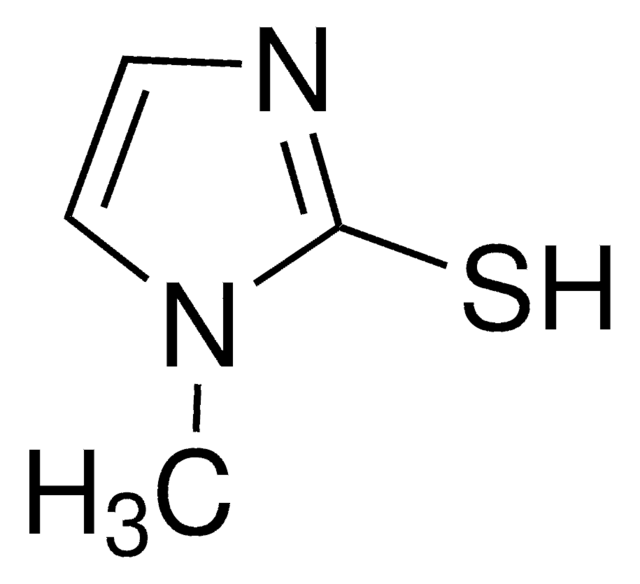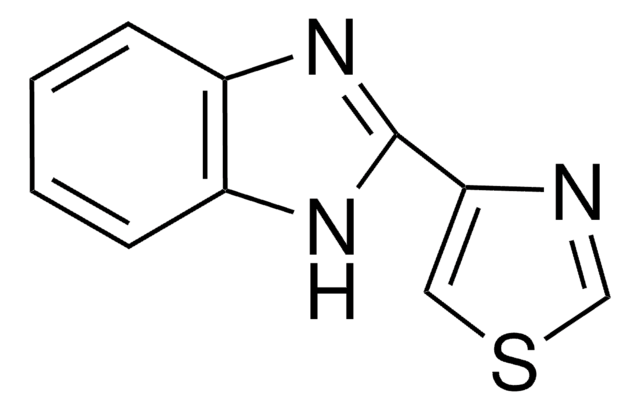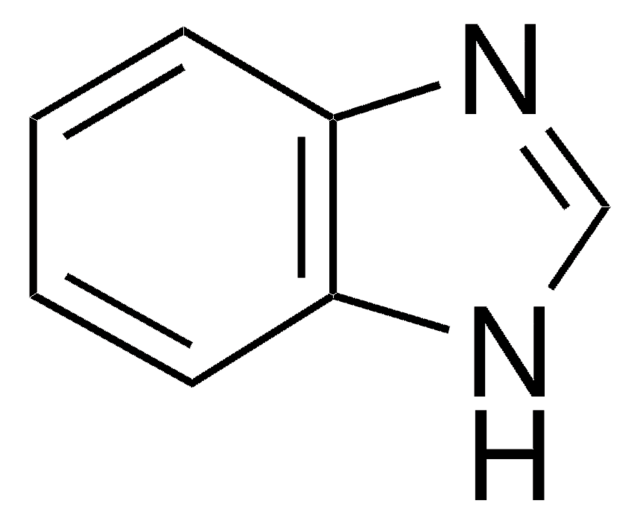14131
Iopanoic acid
analytical standard
Synonyme(s) :
2-(3-Amino-2,4,6-triiodobenzyl)butyric acid, 3-(3-Amino-2,4,6-triiodophenyl)-2-ethylpropanoic acid, Iodopanoic acid
About This Item
Produits recommandés
Qualité
analytical standard
Niveau de qualité
Pureté
≥95.0% (HPLC)
Durée de conservation
limited shelf life, expiry date on the label
Technique(s)
HPLC: suitable
gas chromatography (GC): suitable
Pf
150-156 °C
Application(s)
clinical
Format
neat
Température de stockage
2-8°C
Chaîne SMILES
O=C(O)C(CC)CC1=C(I)C(N)=C(I)C=C1I
InChI
1S/C11H12I3NO2/c1-2-5(11(16)17)3-6-7(12)4-8(13)10(15)9(6)14/h4-5H,2-3,15H2,1H3,(H,16,17)
Clé InChI
OIRFJRBSRORBCM-UHFFFAOYSA-N
Vous recherchez des produits similaires ? Visite Guide de comparaison des produits
Description générale
This radiographic contrast agent prevents the release of thyroid hormone from the thyroid gland. It also inhibits the conversion of thyroxine to triiodothyronine.
Application
Produits recommandés
Faites votre choix parmi les versions les plus récentes :
Certificats d'analyse (COA)
Vous ne trouvez pas la bonne version ?
Si vous avez besoin d'une version particulière, vous pouvez rechercher un certificat spécifique par le numéro de lot.
Déjà en possession de ce produit ?
Retrouvez la documentation relative aux produits que vous avez récemment achetés dans la Bibliothèque de documents.
Les clients ont également consulté
Notre équipe de scientifiques dispose d'une expérience dans tous les secteurs de la recherche, notamment en sciences de la vie, science des matériaux, synthèse chimique, chromatographie, analyse et dans de nombreux autres domaines..
Contacter notre Service technique








